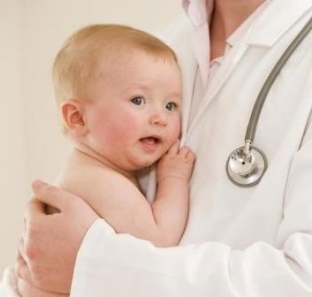The treatment of atopic dermatitis in children today can be characterized as symptomatic, it should include antipruritic, anti-inflammatory effects, restoration of the epidermal barrier, elimination of allergens and other triggers. As many foreign experts in atopic dermatitis emphasize, there is no therapy that can completely cure the disease, but with competent medical guidance, in most cases, it is still possible to control the disease. So what is the symptomatic treatment of atopic dermatitis in children?
Important aspects of the treatment of atopic dermatitis in children
When planning such treatment, at least five aspects must be taken into account: itching, dry skin, eczema, skin infections, allergies (K. Thestrup- Pedersen, 2002). However, improper treatment can aggravate the disease, notes estet-portal.com. Mistakes and failures in the treatment of atopic dermatitis in children can be overcome by following some important points.
When treating atopic dermatitis in children, the following factors should be considered:
- child's age;
- stage of the pathological process;
- features of the skin and the effect of local preparations on it;
- age characteristics of the organism's vital activity;
- the ability to conduct proper skin care.
How to avoid mistakes in the treatment of atopic dermatitis in children?
Before starting treatment of atopic dermatitis in children, it is necessary to carefully consider the age characteristics of the patient when choosing and dosing systemic drugs, the interaction of drugs prescribed simultaneously (including those recommended by different doctors for concomitant diseases) with the possible development of complications or weakening of the action of one from drugs.
When prescribing local treatment of atopic dermatitis in children, one should focus on the stage of the eczematous process and choose the appropriate physical galenic form of the drug:
- in the acute stage, when weeping, small children should not be prescribed occlusive applications, fatty ointments, irritating reducing pastes with resins and tar;
- in the subacute stage, excessively drying suspensions should not be used, soft pastes and creams should be used instead;
- in the chronic stage, it is possible to prescribe tar, ichthyol, naftalan oil in reducing pastes with antiproliferative action in the evening (to avoid photodermatitis).
Also, in the treatment of atopic dermatitis in children, it is necessary to take into account the age characteristics of the body, choosing the method of using local remedies: in infants, do not use cold lotions because of the danger of hypothermia, instead of them, dermatological compresses should be prescribed; avoid in the first half of the year the appointment of alcohol preparations that injure the skin, especially dry, as well as preparations containing lead, phenols (due to the risk of intoxication), aniline paints in high concentrations (due to the likelihood of granulomas; carcinogenesis).
It is important to be aware of the high resorptive capacity of the skin in infancy and possible complications in the absorption of hormones from drugs during the treatment of atopic dermatitis in children.

At the same time, there is an increased risk of developing acute adrenal insufficiency, salicylism. Do not use fluorinated glucocorticoids, which are banned for young children in all countries. You can use small amounts of hormonal preparations approved for children's practice (hydrocortisone ointment 0.25 & ndash; 1%, advantan, afloderm, locoid; elocom — from 2 years old), not more than 20% of the skin area in short courses of 3 & ndash; 7 days , use sparing methods of applications (dashed, tandem, stepped), with a longer application, remember the phenomena of tachyphylaxis and rebound.
Warn patients about the inadmissibility of self-mixing of different drugs in the treatment of atopic dermatitis in children, do not “dilute” moisturizing cream glucocorticoid agents, as this violates their pharmacokinetics; without the need to use combination preparations with several active ingredients;
In the presence of microbial complications, do not prescribe local immunosuppressants and dermatocorticoids, treat pyogenic lesions and yeast dermatitis in a timely manner.
It is important to maintain proper skin care with emollients and moisturizers on a regular basis; exclude external use of drying and irritating herbs.
Difficulties and errors in the diagnosis and treatment of atopic dermatitis in children can be overcome by improving dispensary observation or organizing schools for parents in medical institutions.







Add a comment